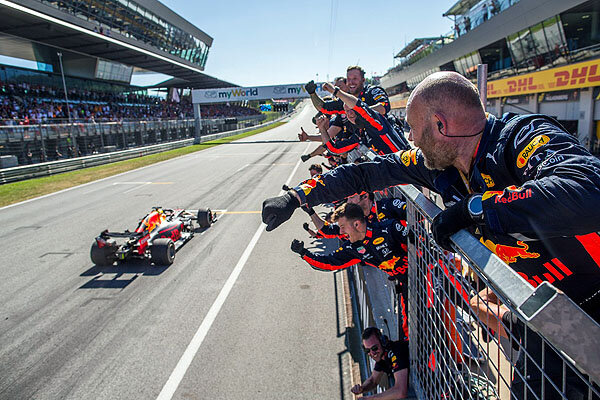When Toro Rosso switched to the Honda RA 618H for 2018 they found it was markedly different from their previous power unit. Honda continued to employ the same system of a split, shaft-driven, turbocharger that had been used successfully by Mercedes since the start of the turbo-hybrid formula in 2014. There were packaging advantages from the start even though the engine sat further back in the chassis due to the mounting of the turbo’s compressor section at the front of the cylinder block because the rear end of the power unit was less bulky. This thus conferred a small aerodynamic advantage in shaping the engine cowling and cleaning up airflow before it reached the rear wing.
During that season there were regular meetings which were attended by Honda, Toro Rosso, and engineers from Red Bull Technology. However, Red Bull saw enough in Toro Rosso’s performance to be convinced that partnering with Honda was the right way to go forward from 2019, and were particularly impressed that in 2018 Toro Rosso’s engineers had been boosted by Honda’s willingness to work so closely and to encourage input into the packaging of components.
Another plus point was that the RA619H motor was fundamentally very similar to the RA618H, and even the RA617H from 2017, and that facilitated very efficient integration of the engine into the Red Bull RB15 chassis. By the time Red Bull were fully engaged and privy to all the relevant information, team boss Christian Horner was highly enthused by what he had seen and revealed that the integration process was the best they had experienced. It was not hyperbole. In interviews, Horner also disclosed how much his engineers enjoyed working with a genuine engine partner for the first time, rather than with just a supplier.
Toro Rosso had already noted in 2018 that the Honda RA618H was reasonably powerful, and Pierre Gasly had been very happy with its performance even then. When the new RA619H ran for the first time on the in-house dynamometer over the winter of 2018/19 it was clear from the outset that its performance was promising. Horner described it as “a rocket”.
When Max Verstappen first got to try the RA619H in the Red Bull RB15 in the first Barcelona test he was extremely enthusiastic about its performance and said he had no doubt that it had more power than he had had in 2018, but also that it wasn’t peaky, and that there was a wide powerband.
The delivery of that power was also an improvement, as it facilitated smoother downshifts which helped to make the car more stable under braking and when downshifting while turning into corners.
The Australian GP season-opener in Melbourne indicated that there was still a slight deficit to Mercedes and Ferrari in outright power, but during the season three separate evolutions of the power unit were introduced and each was an improvement. By mid-season, Verstappen believed they were on a par with Mercedes, and by the time they got to the higher altitude in Mexico City, which is around 7350 feet above sea level, it seemed that they had more power than their rivals.
By the Spanish GP, a revised front wing and endplates improved the car’s balance, and then a series of smaller but critical further upgrades in Canada, France, and Austria honed that to a competitive pitch. Gradually, as PU reliability improved, the drivers were able to push the engines harder in both qualifying and the races.










